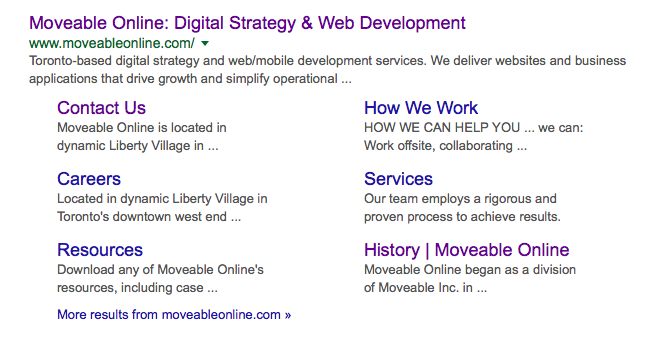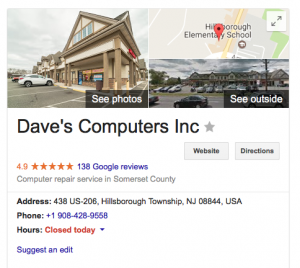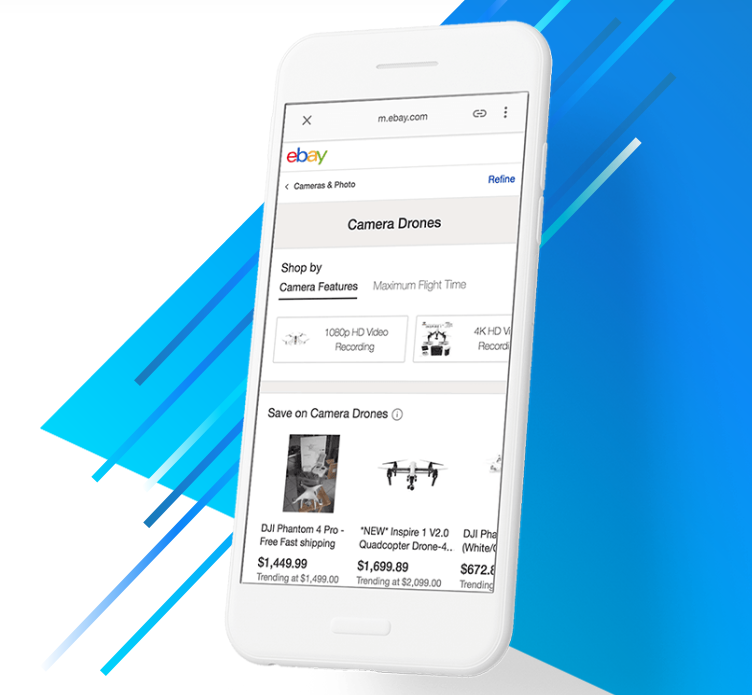By now, you’ve likely seen rich search results popping up in Google for brands and publishers, and you might be wondering how you can get your site to appear in search results like that.
In this article, we’re going to cover how you can enable what is referred to as “Google Publisher Markup”, and why it’s valuable for your site.
What can you do with Publisher markup?
Over the years, Google has added more and more rich snippets to its search results pages.
Listicles, answers to questions, definitions, directions, instructions, company profiles, reviews, and the weather are all things that Google can now pull from content and repurpose into a search result.
Publisher markup (along with Schema.org) is the technical HTML implementation of this.
Publishers traditionally allowed companies to post their own information in a short bio (“meta description”) as a search result when people Googled them.
For example, here’s ours:

Today, the same functionality has been expanded to include other capabilities that let you:
- Add a searchbox to your site

- Provide a specific name for your business to show up in organic search (or multiple names)
- Submit a specific logo to show up in search results and the knowledge graph, like in the example of IBM at the top of the page
- Add breadcrumbs
- Add social media links to SERPs
- Redirect people to your app instead
Why bother with markup?
Markup makes your search result easier to read and understand. It helps drive user engagement. Markup gives MOST users MOST of the information about your company they’re going to be looking for.
 For example, imagine that you were getting your computer fixed by Dave’s Computers, but you’re going to be 20 minutes late picking it up.
Without Markup, you have to dig through three pages of the site to get a contact number.
For example, imagine that you were getting your computer fixed by Dave’s Computers, but you’re going to be 20 minutes late picking it up.
Without Markup, you have to dig through three pages of the site to get a contact number.
With Markup, it’s just one click. You can even call directly from the search result for a more streamlined experience.
Second, snippets will get more important as people increasingly search via voice tools like Siri or Google Assistant. In conjunction with the Schema.org project, Google is moving from telling you where to get information to providing that information themselves.
This is an important shift.
As Google becomes more of a one-stop shop, they’ll prioritize companies that make it easy for them to pull information in the form they want it. To catalyse the change, Google’s made it good for SEO, both in terms of ranking and in how your result looks in the SERPs:
- Google My Business links your Google+ account to your search results. This ports over the information to your search results (e.g. phone numbers).
- Enable breadcrumbs so people can see where they’re going to land before the click.
Accelerated Mobile Pages

via
AMP Project
The final benefit of using Publisher markup is integration with the Accelerated Mobile Pages (AMP) project.
It’s a system of building web pages in stripped-down HTML so they respond extremely quickly over slow connections on mobile devices. You can publish your site with AMP using a plugin if you’re using a CMS, or you can build your own AMP pages.
Either way, AMP helps your site by:
- Providing a visual cue in the SERPs that your site is speedy on a phone
- Letting your content into the Top Stories carousel
- Pulling enriched snippets from your content for certain content types like reviews, recipes, music, video, local businesses, and TV and movies

How to add Publisher markup
Fortunately, you don’t have to bother with rel=publisher links anymore.
Now, adding Publisher markup to your site is a simple task:
- Register your business with the search console.
- Configure your information like name, number, address, and hours to display exactly how you want to them too.
- Add a specific site name to search results using JSON-LD or Microdata.
- Add your logo to the knowledge graph using Microdata in your page header.
- Add social media links using this microdata markup in your page header.
Now, you’re set for the basics of Publisher markup.
However, there’s plenty of additional work you can do to make your site even more user (and Google) friendly.
- Adding breadcrumbs makes it easy for people to see where they’re going before they click.
- Adding a searchbox using markup language on your homepage reduces the clicks for users to get where they’re going.
Over to you
Now it’s over to you.
Making your site exceptionally user friendly doesn’t have to be an arduous task anymore. Google’s Schema.org project, AMP, and Publisher markup present brands with unique opportunities to provide users the information they want at the click of a link. And with distinct SEO benefits as well, the opportunity cost of not being on Publisher is only going to increase.
At the end of the day, Publisher can help make your customers’ lives easier. And no one’s ever lost business doing that.
